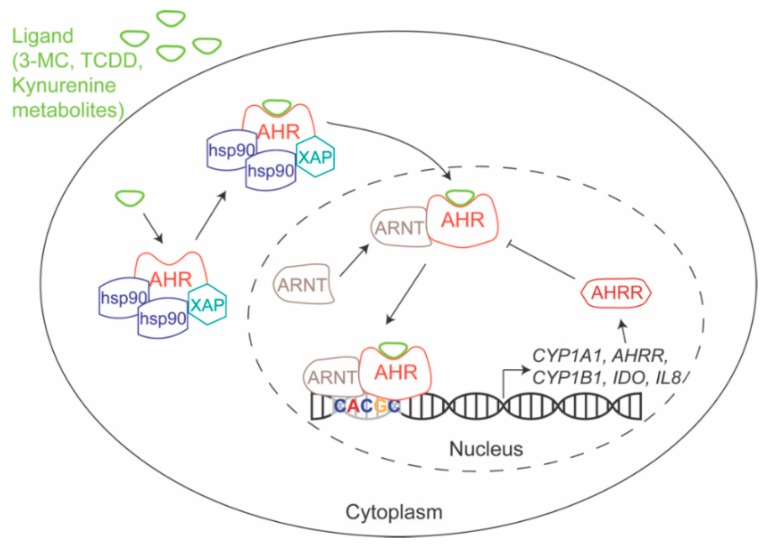Figure 1.
AHR Mechanism of Action. Prior to ligand binding, AHR is bound by cochaperones Hsp90 and XAP, which maintain its localization in the cytoplasm. After ligand binding, it is released from its cochaperones and is transported into the nucleus, where it heterodimerizes with ARNT and binds to DNA—often binding to AHREs (5′-CACGC-3′)—and regulates gene expression. AHRR is a prototypic AHR target gene and the encoded protein is a negative regulator of AHR. The arrows show the sequence of events that includes interaction, transport, DNA binding, gene expression and RNA translation. The T bar demonstrates that AHRR negatively regulates the AHR-ARNT interaction. AHR: aryl hydrocarbon receptor; AHRE: AHR response element; AHRR: AHR repressor; ARNT: aryl hydrocarbon receptor nuclear translocator; Hsp90: heat shock protein 90; XAP: X-associated protein 2.

